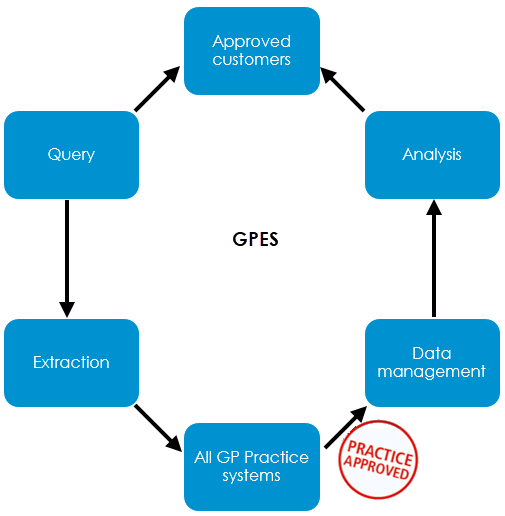General Practice Extraction Service (GPES)
General Practice Extraction Service (GPES) is a centrally managed, primary care, data extraction service in England managed by NHS Digital.
The purpose of GPES is to extract and compare data from across NHS England. This allows data to be turned into accurate and usable management information, leading to improvements in patient care and greater efficiency across the service. The data extracted is also used to support the payment structure to GPs and Integrated Care Boards (ICBs), although GPES does not calculate or make these payments, that task is carried out by the Calculating Quality Reporting Service (CQRS).
GPES uses methods that ensure patient confidentiality and privacy. Before a data extraction runs, practices must provide explicit consent and data is anonymised before extraction. In some cases, data required does need to be identifiable, however, explicit patient consent must be given before any identifiable data extract.
GPES has been designed to collect your Quality and Outcome Framework (QOF) data with minimal impact on the workload of your practice. You can view your QOF data in Vision 3 in Clinical Audit.
The data extract process consists of three elements:
-
GPES - Assesses requests for data from third parties and collates extracted data (controlled by the NHS Digital).
-
General Practice Data Collector (GPDC) - The system that requests and receives data extracts from primary care systems.
-
GPET-E - An integrated part of Vision 3, designed to receive, verify, run and return data extraction requests. There is no specific Vision 3 module for GPET-E. Notifications, extracted data displays in Clinical Audit.
You can sign up to regular NHS Digital GPES Newsletters to keep you up to date on all GPES developments from the GPES Newsletter website https://digital.nhs.uk/General-Practice-Extraction-Service.
How approved data extraction works
